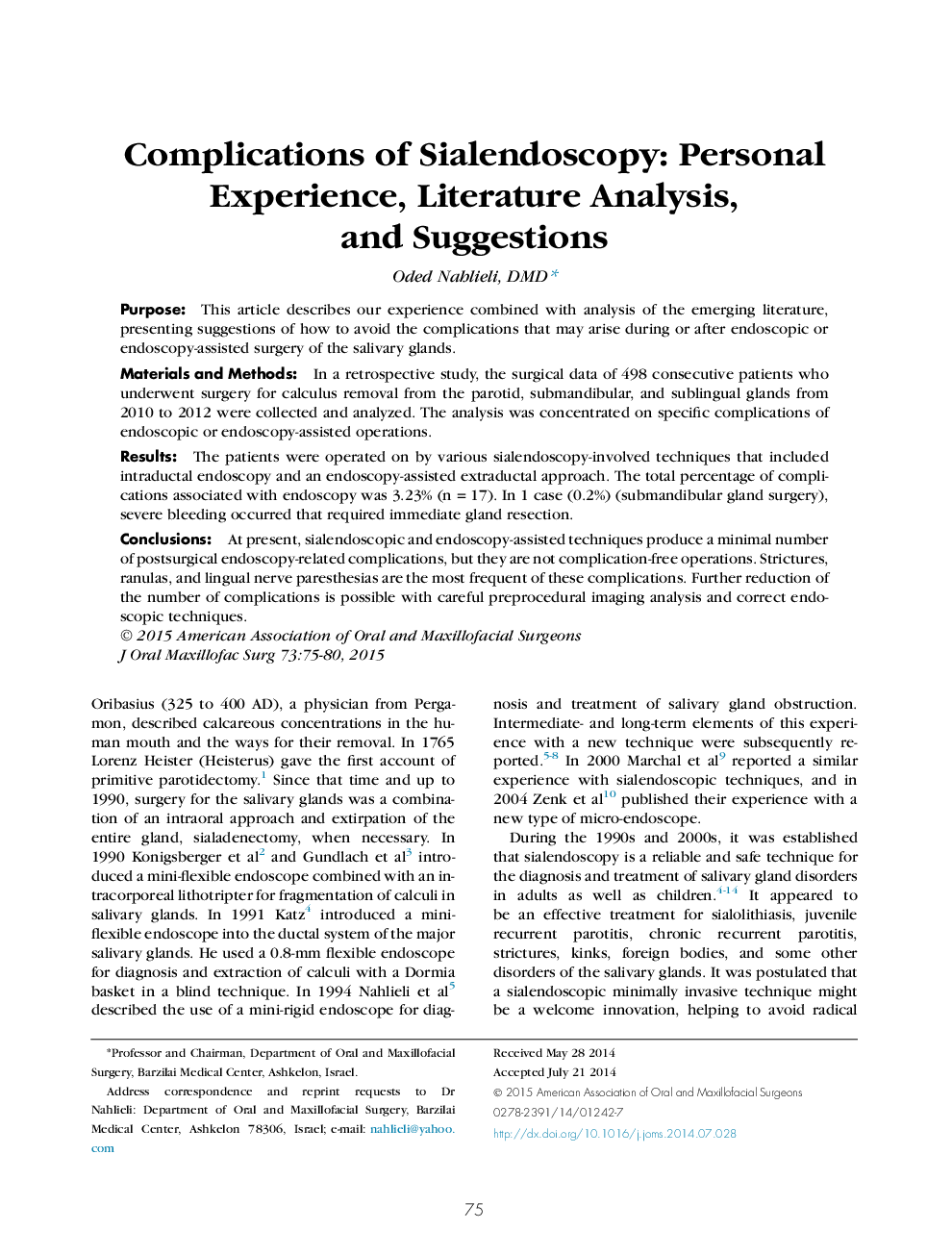| Article ID | Journal | Published Year | Pages | File Type |
|---|---|---|---|---|
| 3153282 | Journal of Oral and Maxillofacial Surgery | 2015 | 6 Pages |
PurposeThis article describes our experience combined with analysis of the emerging literature, presenting suggestions of how to avoid the complications that may arise during or after endoscopic or endoscopy-assisted surgery of the salivary glands.Materials and MethodsIn a retrospective study, the surgical data of 498 consecutive patients who underwent surgery for calculus removal from the parotid, submandibular, and sublingual glands from 2010 to 2012 were collected and analyzed. The analysis was concentrated on specific complications of endoscopic or endoscopy-assisted operations.ResultsThe patients were operated on by various sialendoscopy-involved techniques that included intraductal endoscopy and an endoscopy-assisted extraductal approach. The total percentage of complications associated with endoscopy was 3.23% (n = 17). In 1 case (0.2%) (submandibular gland surgery), severe bleeding occurred that required immediate gland resection.ConclusionsAt present, sialendoscopic and endoscopy-assisted techniques produce a minimal number of postsurgical endoscopy-related complications, but they are not complication-free operations. Strictures, ranulas, and lingual nerve paresthesias are the most frequent of these complications. Further reduction of the number of complications is possible with careful preprocedural imaging analysis and correct endoscopic techniques.
